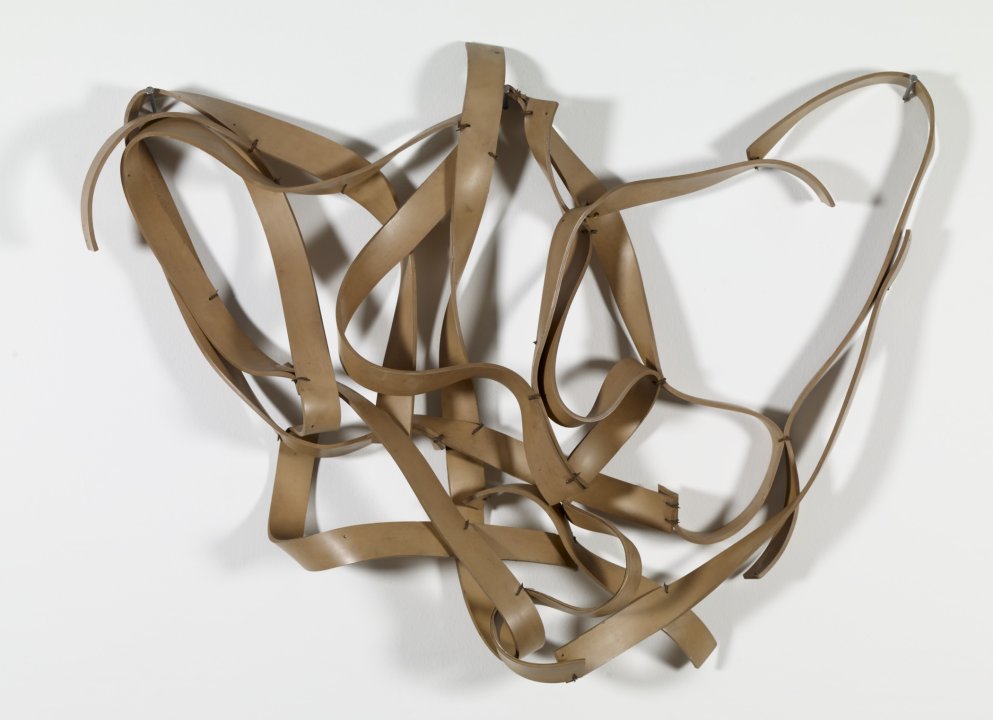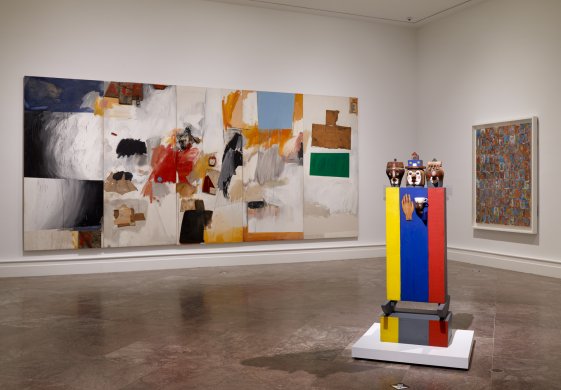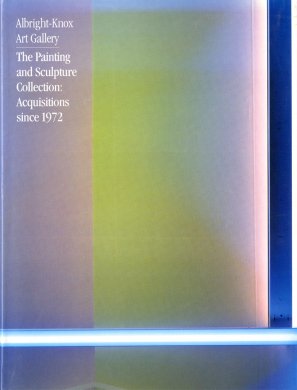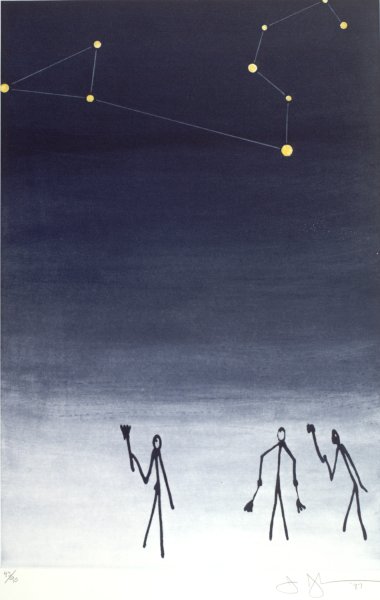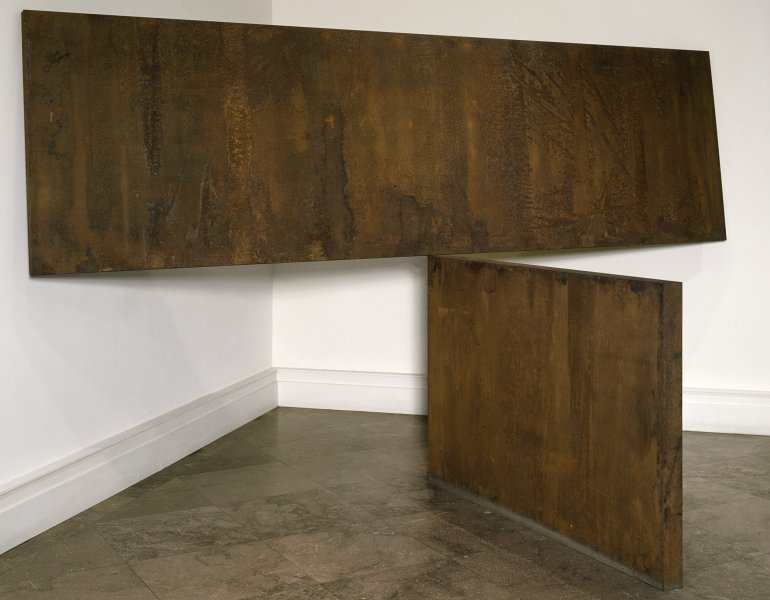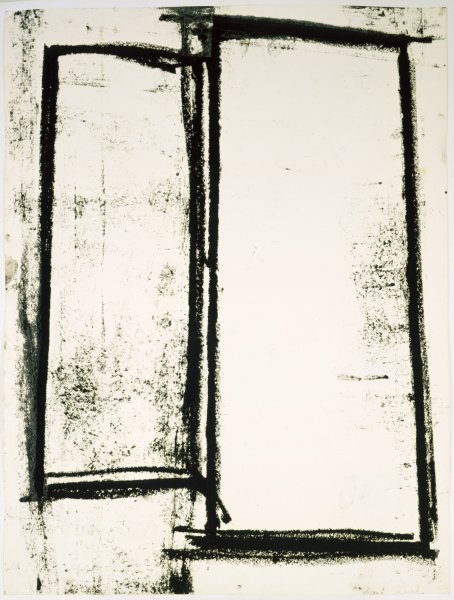Richard Serra
American, 1938-2024
Triangle Belt Piece, 1967
Artwork Details
Materials
rubber
Measurements
overall (irregular): 36 x 60 x 12 inches (91.44 x 152.4 x 30.48 cm)
Collection Buffalo AKG Art Museum
Credit
James G. Forsyth Fund, 1973
Accession ID
1973:6
Shortly after moving to New York City in 1966, Richard Serra began making art with scraps of rubber he discovered in the Canal Street area, including wall reliefs such as Triangle Belt Piece. This work comprises strips of the found material wired together and arranged so that they droop in large, curving bands. As Serra has noted, his rubber sculptures are defined by gravity and by a form of drawing that is “predicated on the joints and where the lines crossed.” Occasionally, Serra also combined rubber strips with irregular loops of neon tubing. And, in some instances, he addressed themes of repetition and variation, which many other artists and experimental musicians of the time were also exploring, by hanging multiple “belt” pieces in a row.
Label from Giant Steps: Artists and the 1960s, June 30–December 30, 2018
